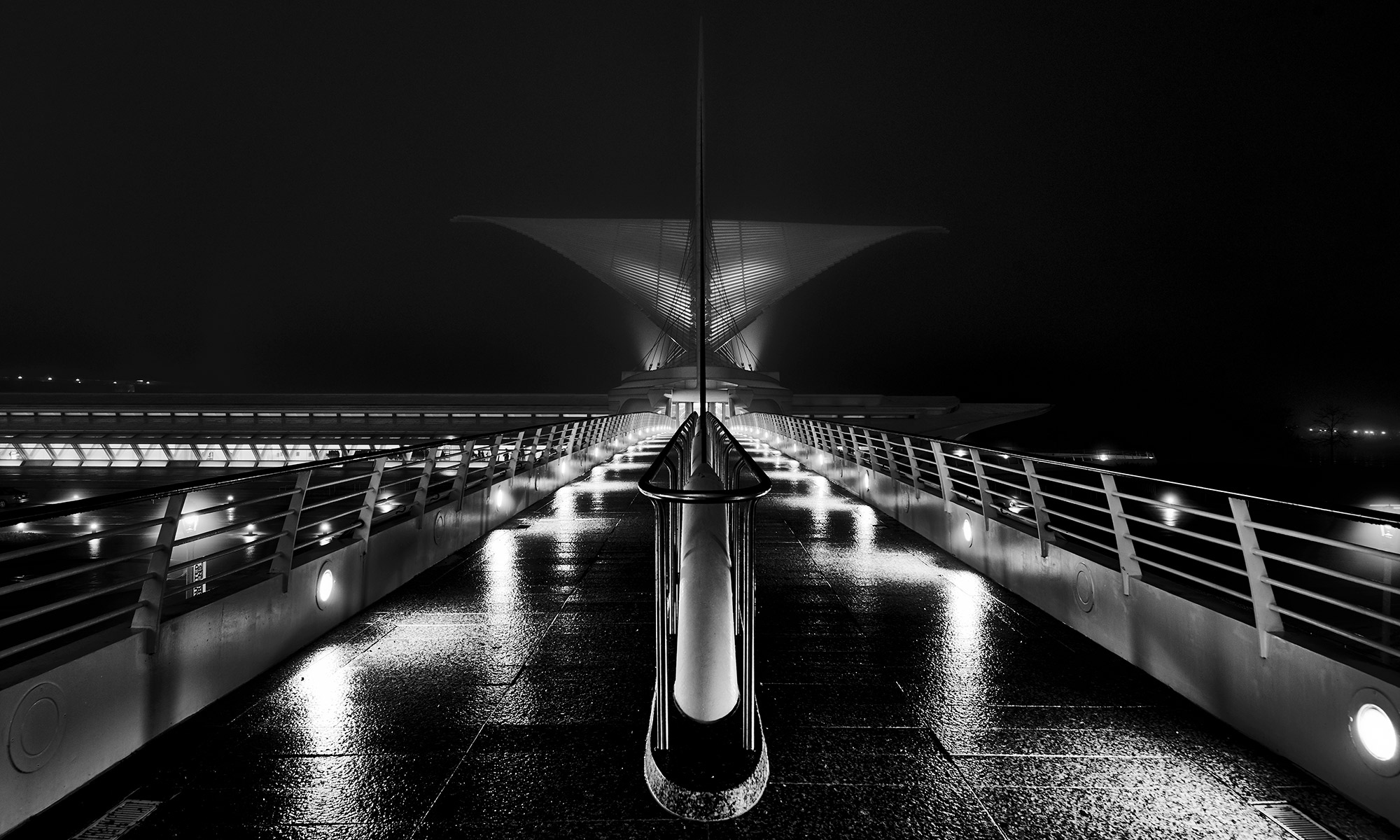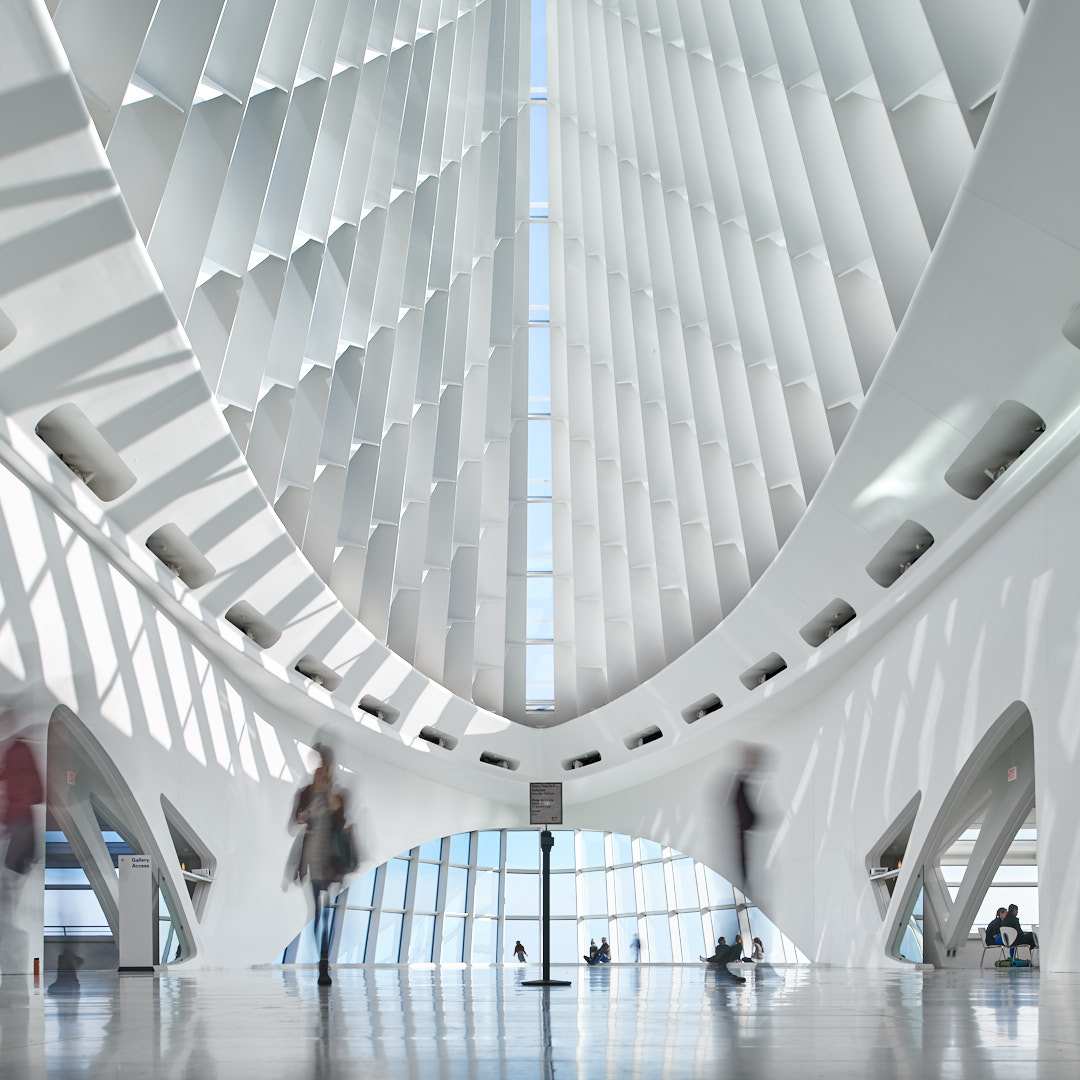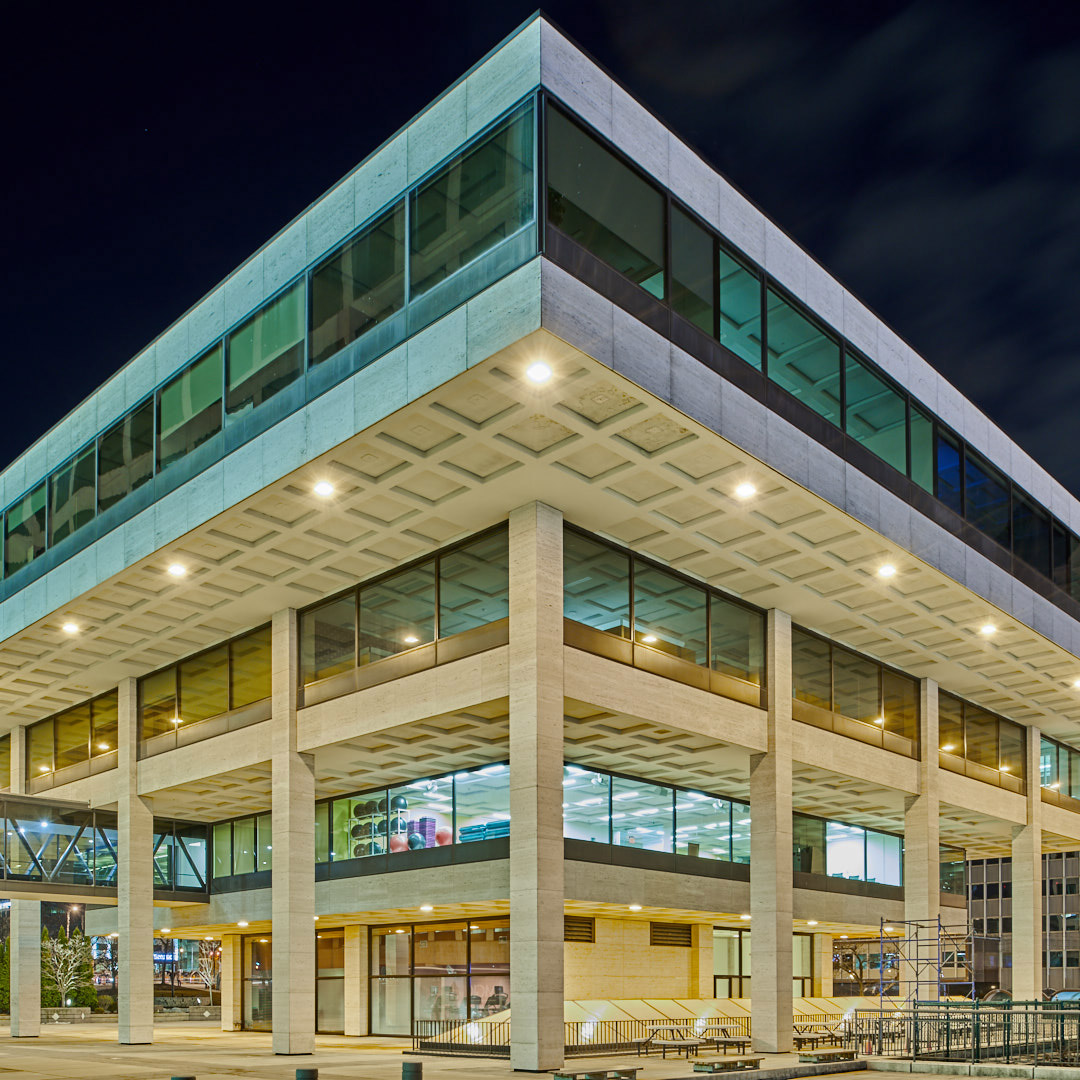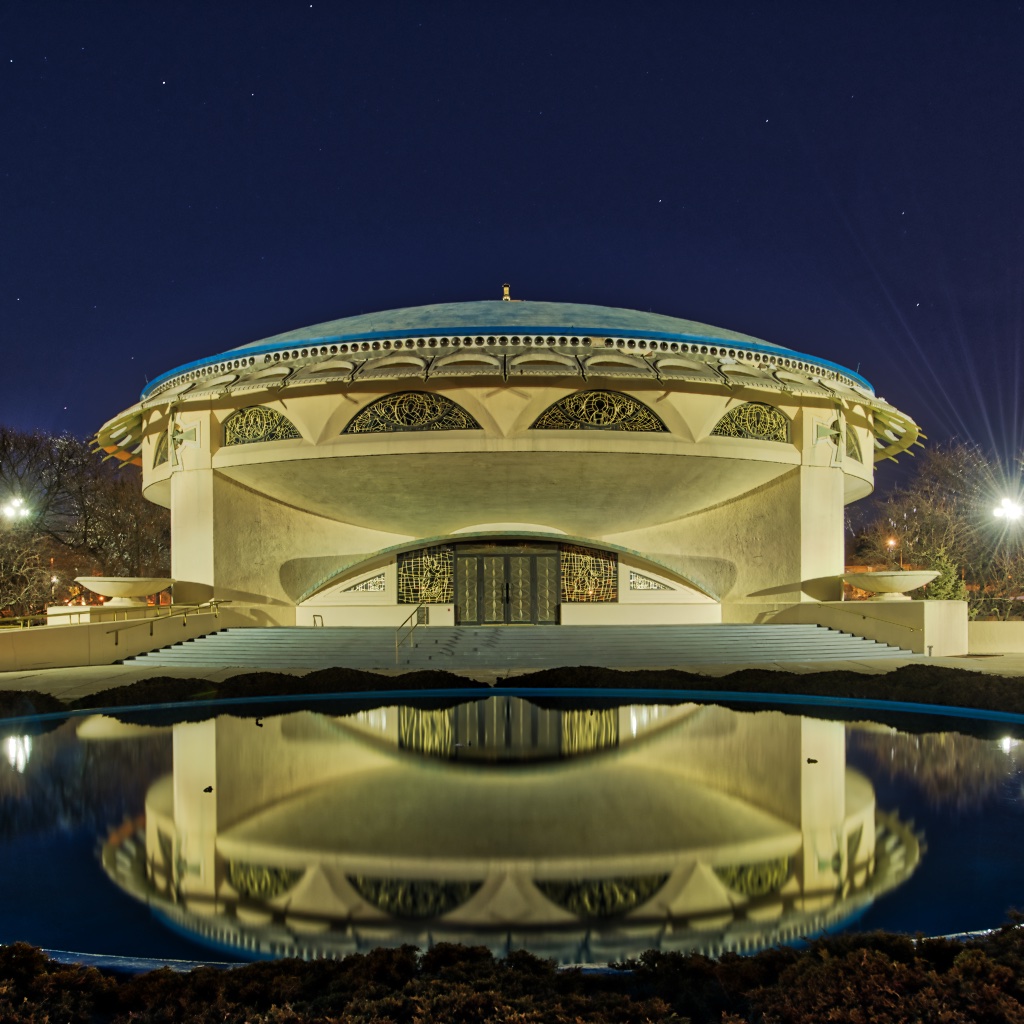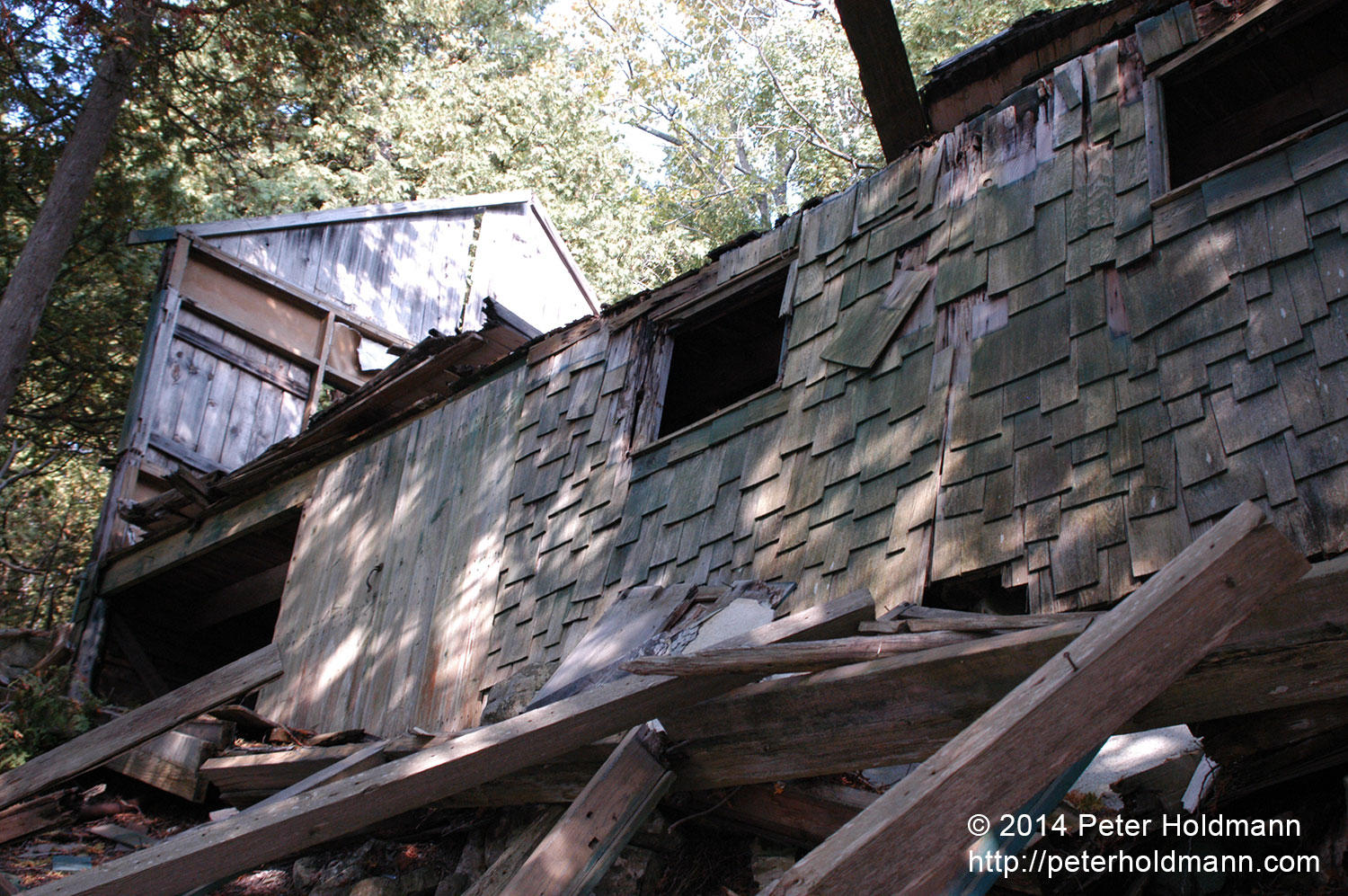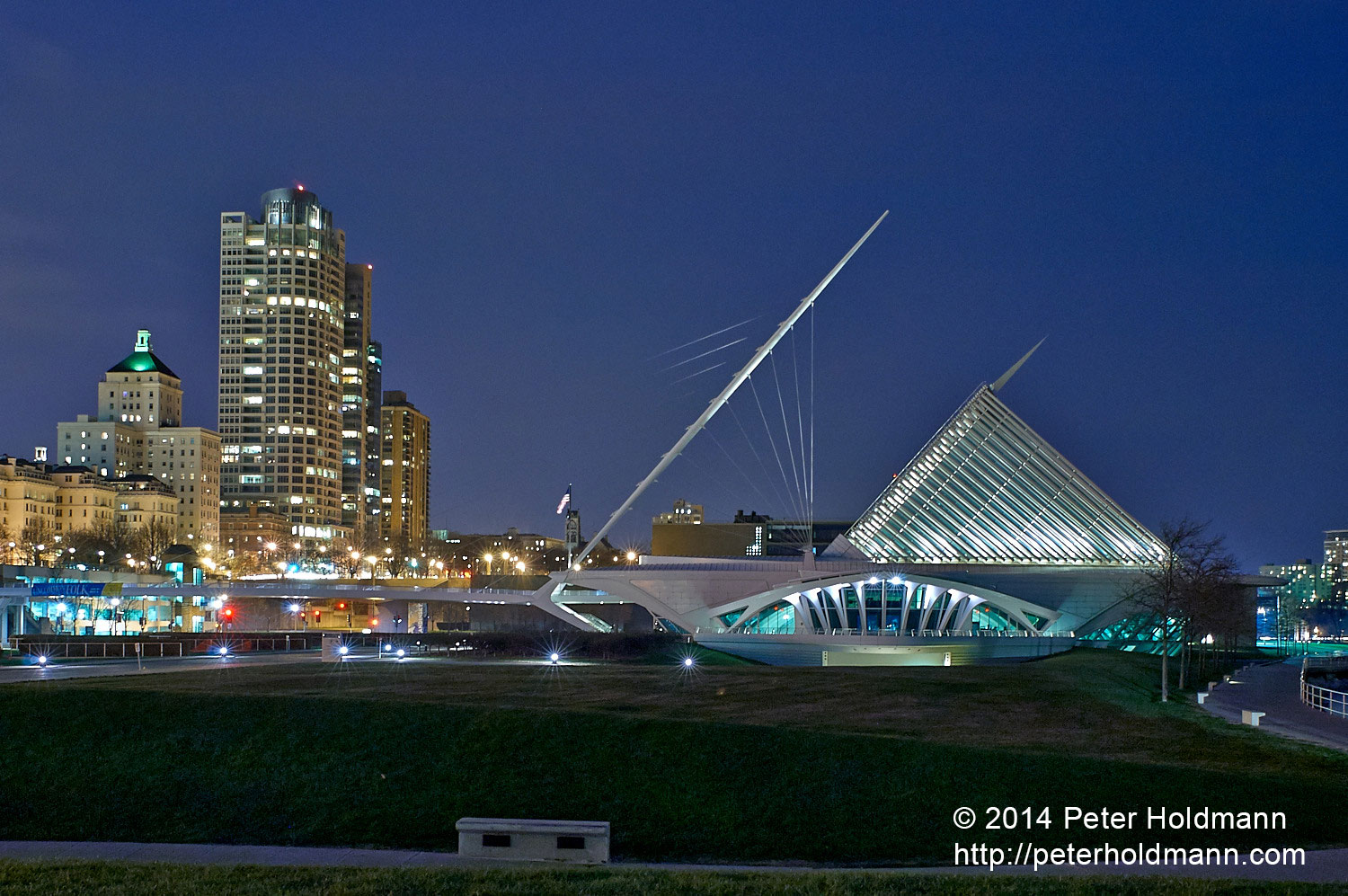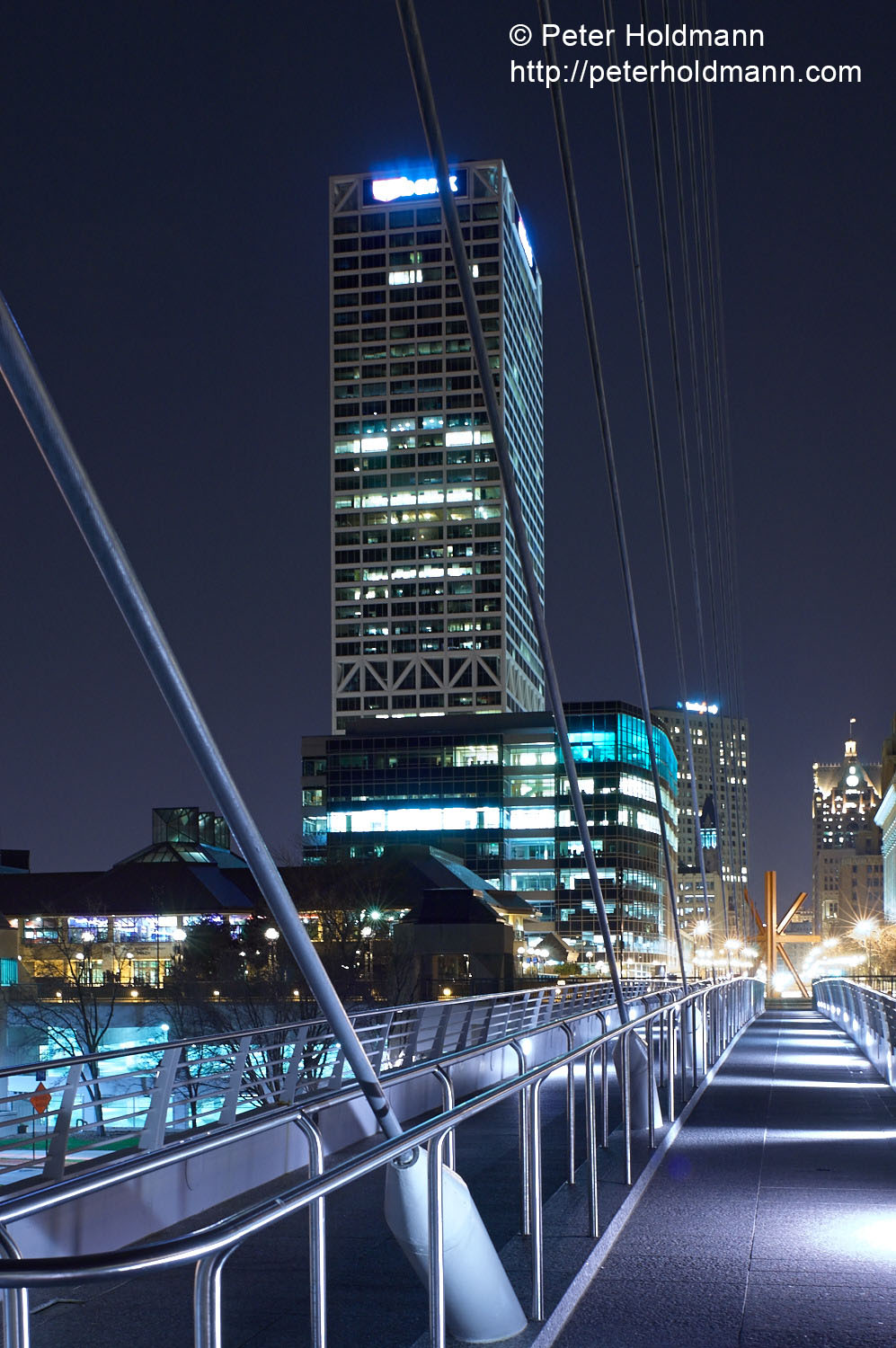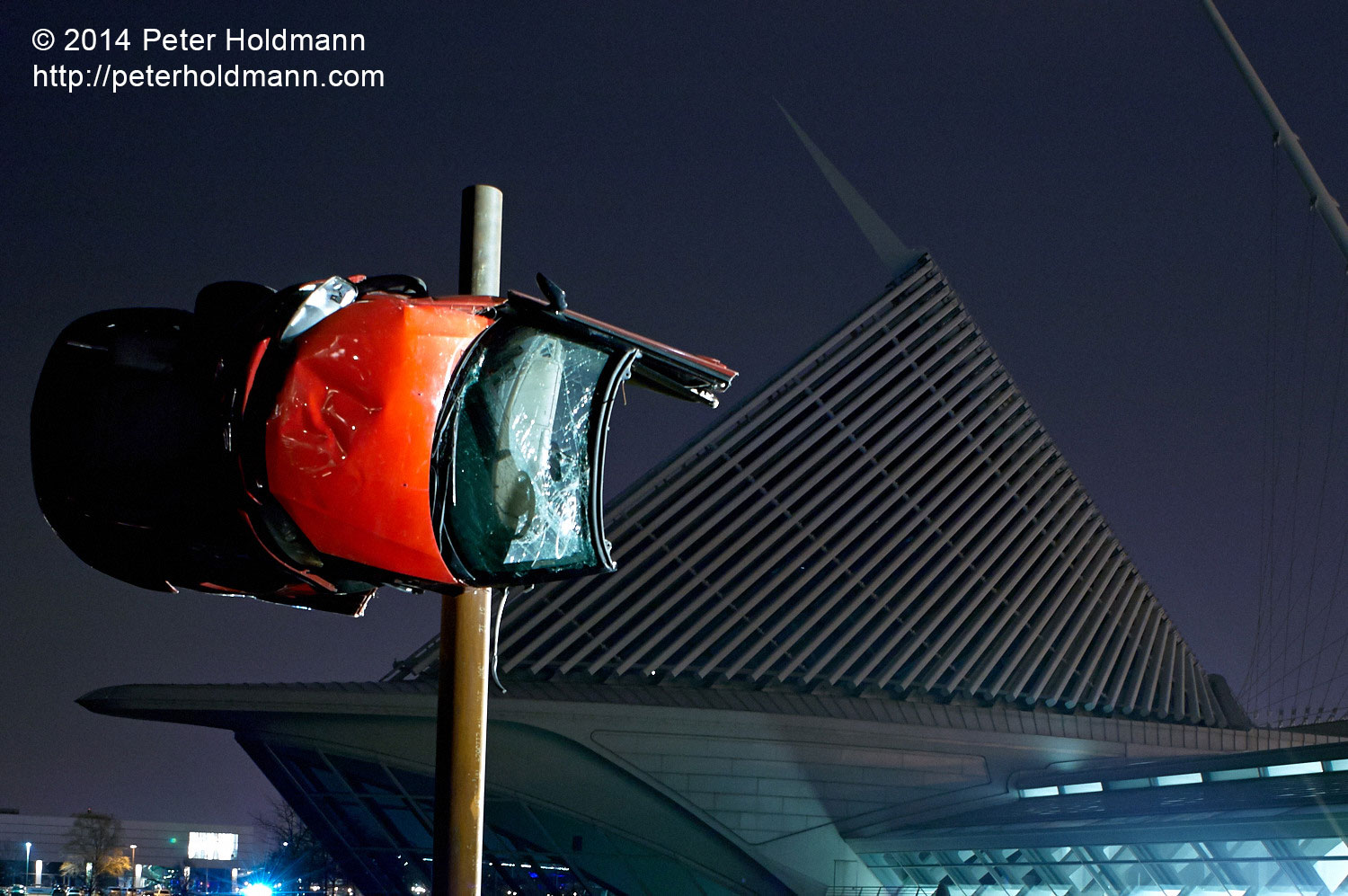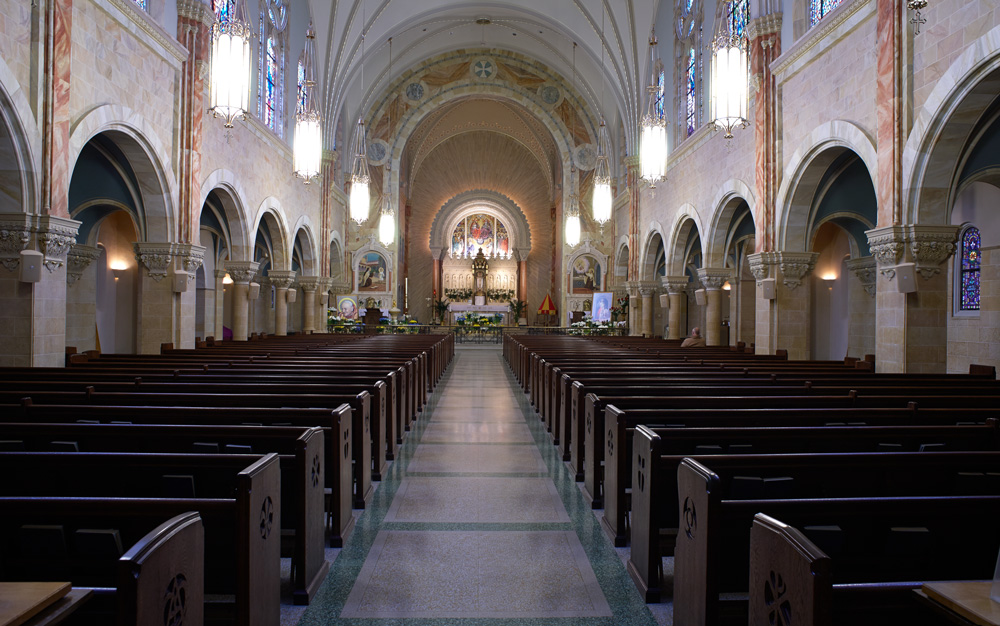
One use of tilt-shift lenses is creating composite images. Panoramas are pretty common, and rely on taking images with the lens shifted right and left, as well as a center image if needed, and compositing them in Photoshop or a similar program. Since the sensor plane does not move, the perspective stays very even across the image, preventing some of the weird corners and bends that a moving camera panorama can create. The disadvantage is that the shifted panoramas can not take in the 180+ degree views that moving the camera can.
This picture, taken at The Basilica of the National Shrine of Mary, Help of Christians, at Holy Hill, is my first attempt at creating a composite image from four images. The four corners are individual images that were joined in Photoshop. The lens was shifted, rotated to four of the corner stops on the lens, with a four second image taken at each stop. I processed the RAW images in Capture One, exported them as TIFFs, and composited them in Photoshop.
I think the next multi-story composite I try will be at least 5 images, with a center and 4 corners. Due to the distortion of the lens, some of the elements in the center needed some special care to get them to line up correctly.
Camera was a Nikon D100, 28mm f4 PC-Nikkor lens, processed in Capture One and Photoshop.



